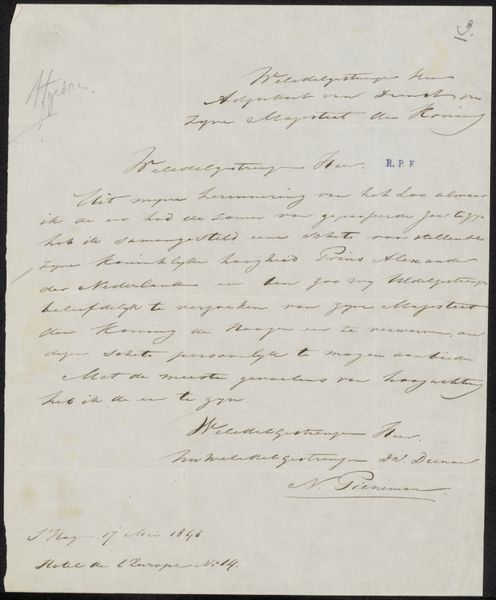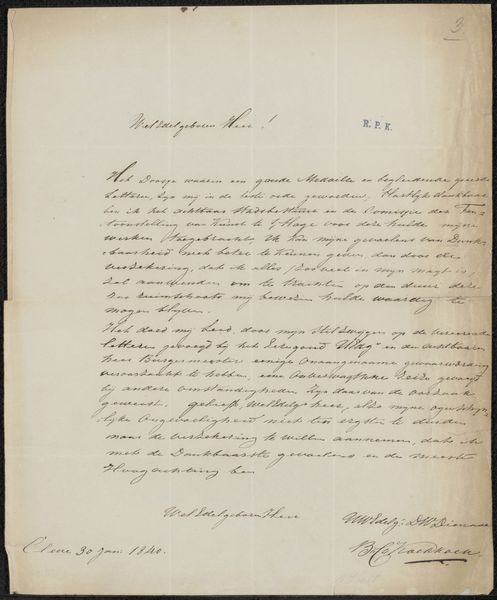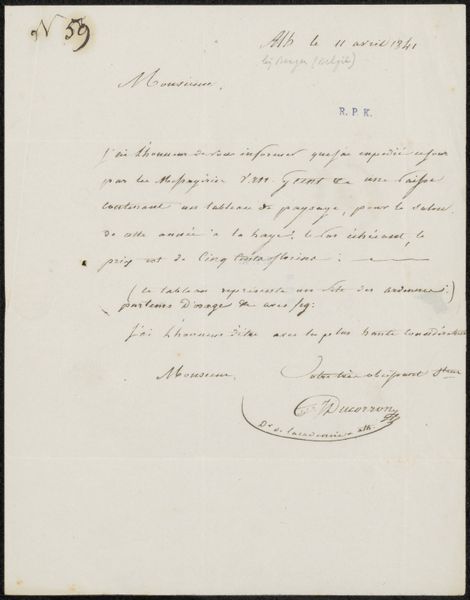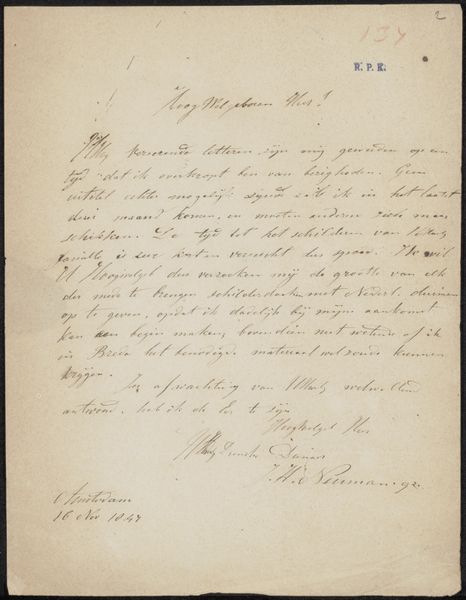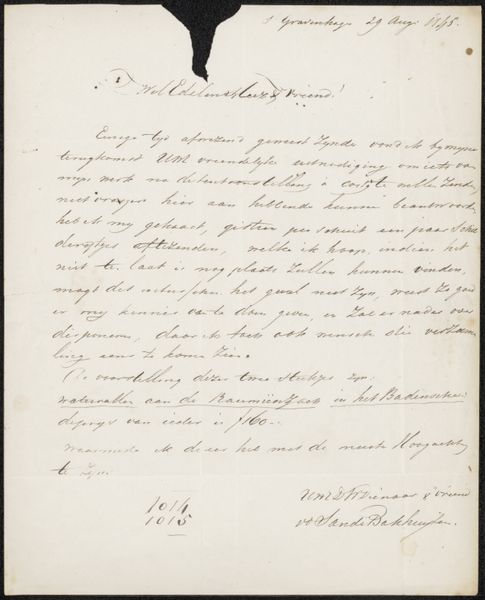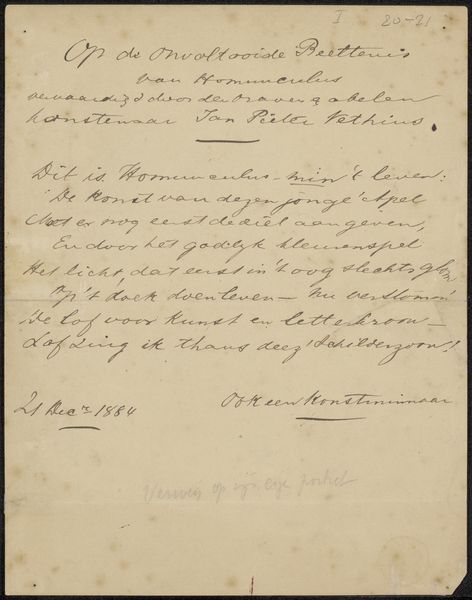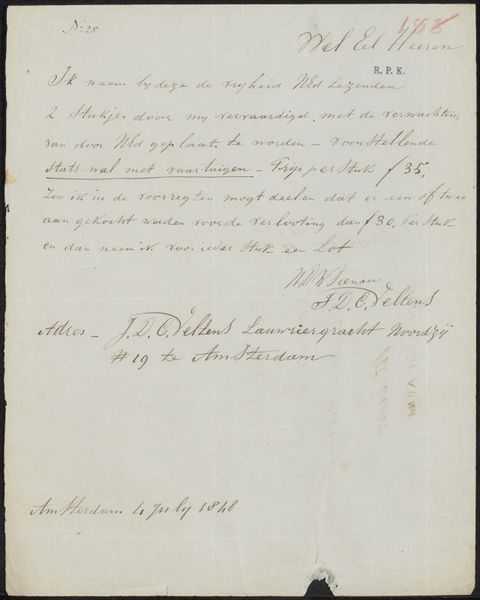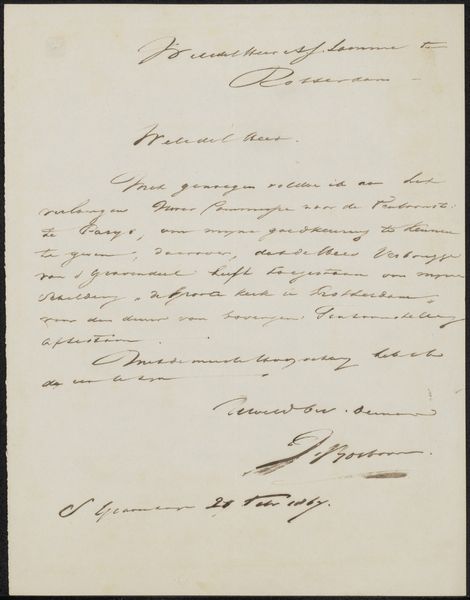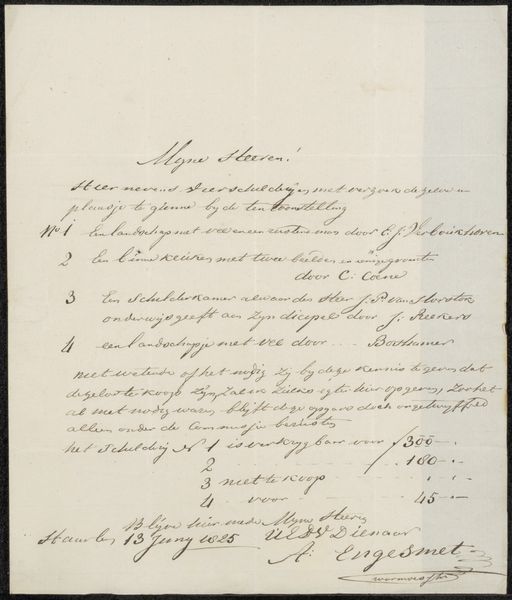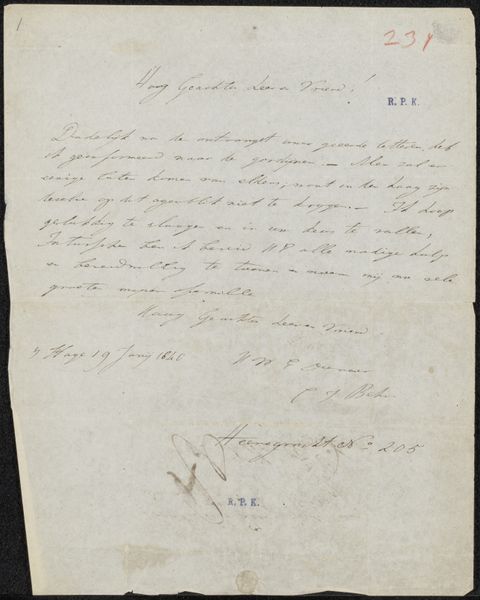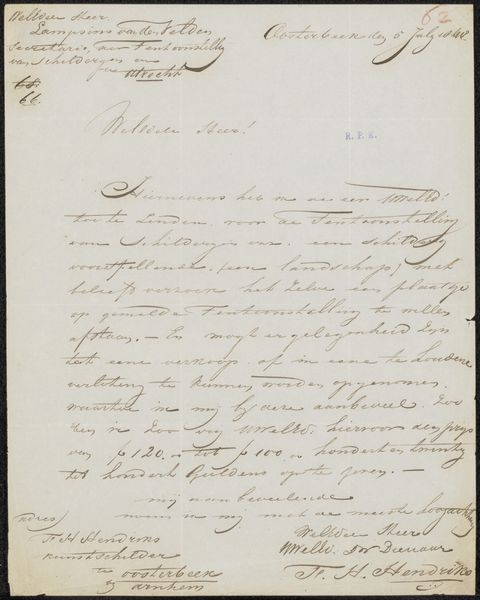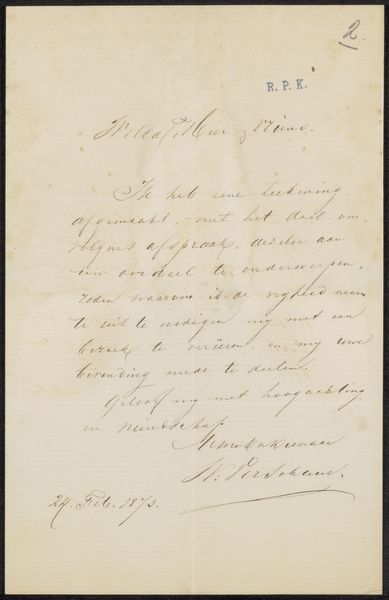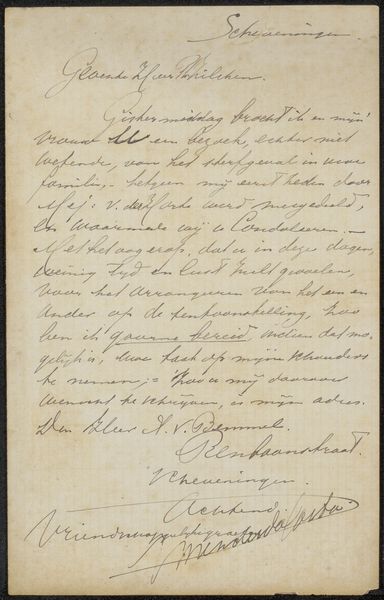
drawing, paper, ink
#
portrait
#
drawing
#
paper
#
ink
#
romanticism
Copyright: Rijks Museum: Open Domain
Curator: Let's turn our attention to "Brief aan anoniem," which translates to "Letter to Anonymous," possibly penned in 1836 by Barend Cornelis Koekkoek. It’s ink on paper and held here at the Rijksmuseum. Editor: There’s an intimacy to it that’s really striking, even just in its scale and tone. A handwritten letter… almost feels forbidden, like we're eavesdropping on a private conversation across centuries. The Romanticism style hints at a focus on personal emotion, no? Curator: Indeed. Koekkoek, known for his Romantic landscapes, perhaps used this letter as a means of personal reflection or commentary on the artistic milieu. Consider the socio-political forces acting on artists at the time—patronage, artistic expectations. This letter, by its anonymity, seems to critique this pressure. Editor: Absolutely. The fact that it’s addressed to "anonymous" suggests it may never have been intended for a specific individual, and, rather, meant as a kind of open statement or personal reckoning, grappling perhaps with artistic doubts or societal expectations of his work and role in Romantic art circles. Who has this anonymous letter empowered? Curator: It highlights, perhaps, his role within the construction of artistic identity during that era. The very act of writing and preserving this thought demonstrates the consciousness and political nature of artistic expression and its circulation. Editor: I see. It also brings to mind the power dynamics embedded within the art market. If his success as an artist was tied to pleasing patrons, this private document grants a different avenue of expression where he perhaps feels a greater sense of agency. It feels incredibly human. Curator: Ultimately, by remaining "anonymous," the letter prompts us to think about authorship and influence – asking if the recipient even matters as much as the creation and content of the message itself. It’s a challenge for us in the present, even. Editor: And reminds us that the political is always personal and embedded in works of the era – challenging art spaces, like our very own, to not flatten the voice of artists who navigated the complexities of gendered or class structures, and societal constructs of their moment. Curator: Precisely. A potent little missive!
Comments
No comments
Be the first to comment and join the conversation on the ultimate creative platform.
